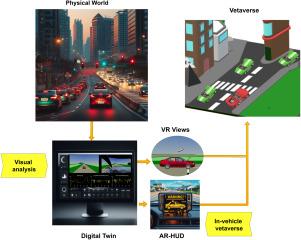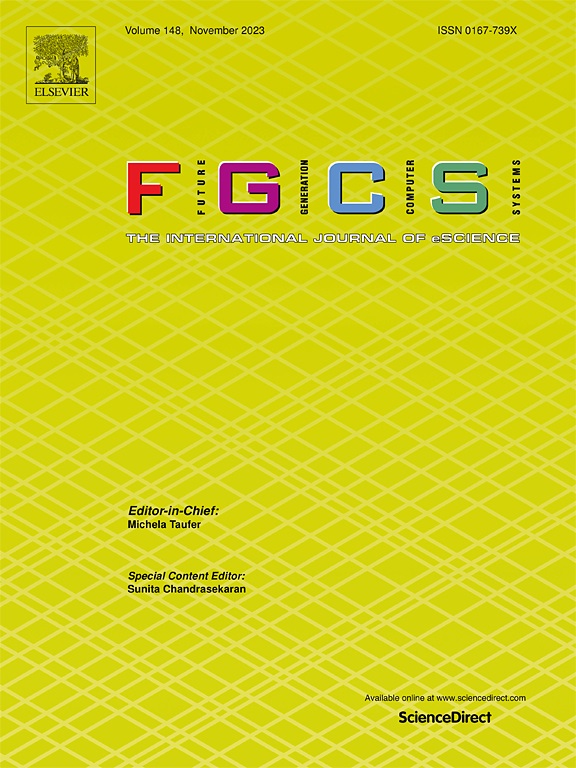Securing the vetaverse: Web 3.0 for decentralized Digital Twin-enhanced vehicle–road safety
IF 6.2
2区 计算机科学
Q1 COMPUTER SCIENCE, THEORY & METHODS
Future Generation Computer Systems-The International Journal of Escience
Pub Date : 2024-10-21
DOI:10.1016/j.future.2024.107555
引用次数: 0
Abstract
The rapid evolution of vehicular communication technologies in recent times necessitates robust security measures and enhanced road safety protocols. Integrity of data shared between vehicles, their Digital Twins (DT) and road side units is at stake. Intrusion in these data can potentially lead to misinformation in Advanced Driving Assistance Systems (ADAS) causing serious consequences upon road safety. These include improper detection of drunk driving behaviors. In this domain, Web 3.0 emerges as the overarching approach that can transform security of vehicles and ensure road safety. This paper explores the potential of Web 3.0 and its key enabling technologies to establish a VEhicular meTAVERSE (Vetaverse) utilizing edge-based DTs of the vehicles to process their dynamics shared in real-time, and based on its deep learning models, predict whether the driving behavior is drunk or sober. This Deep Neural Network (DNN) performs these predictions with 96% accuracy. It secures all Vehicle-to-Digital Twin (V2DT) communications via Multichain - a horizontally scaled parallel blockchains platform that tamper proofs each bit of sensor data, and optimizes transaction validation time to leverage vetaverse security. Results reveal that this framework is accurate and computationally lightweight in comparison to existing state-of-the-art, and brings Web 3.0 to the crucial road safety use-case.

确保车辆安全:用于分散式数字孪生增强型车辆道路安全的 Web 3.0
近来,车辆通信技术发展迅速,需要采取强有力的安全措施,并加强道路安全协议。车辆、其数字孪生系统 (DT) 和路侧装置之间共享数据的完整性岌岌可危。对这些数据的入侵有可能导致高级驾驶辅助系统(ADAS)中的错误信息,给道路安全带来严重后果。其中包括对酒后驾驶行为的不当检测。在这一领域,Web 3.0 成为改变车辆安全和确保道路安全的首要方法。本文探讨了 Web 3.0 及其关键使能技术的潜力,以利用基于边缘的车辆 DT 来建立一个 VEhicular meTAVERSE(Vetaverse),实时处理共享的车辆动态,并根据其深度学习模型来预测驾驶行为是醉酒还是清醒。该深度神经网络(DNN)的预测准确率高达 96%。它通过 Multichain(一个横向扩展的并行区块链平台)确保所有车辆到数字双胞胎(V2DT)通信的安全,Multichain 可对每个比特的传感器数据进行防篡改验证,并优化交易验证时间,以充分利用vetaverse安全性。研究结果表明,与现有的最先进技术相比,该框架准确度高、计算量小,并将 Web 3.0 带到了关键的道路安全应用案例中。
本文章由计算机程序翻译,如有差异,请以英文原文为准。
求助全文
约1分钟内获得全文
求助全文
来源期刊
CiteScore
19.90
自引率
2.70%
发文量
376
审稿时长
10.6 months
期刊介绍:
Computing infrastructures and systems are constantly evolving, resulting in increasingly complex and collaborative scientific applications. To cope with these advancements, there is a growing need for collaborative tools that can effectively map, control, and execute these applications.
Furthermore, with the explosion of Big Data, there is a requirement for innovative methods and infrastructures to collect, analyze, and derive meaningful insights from the vast amount of data generated. This necessitates the integration of computational and storage capabilities, databases, sensors, and human collaboration.
Future Generation Computer Systems aims to pioneer advancements in distributed systems, collaborative environments, high-performance computing, and Big Data analytics. It strives to stay at the forefront of developments in grids, clouds, and the Internet of Things (IoT) to effectively address the challenges posed by these wide-area, fully distributed sensing and computing systems.

 求助内容:
求助内容: 应助结果提醒方式:
应助结果提醒方式:


